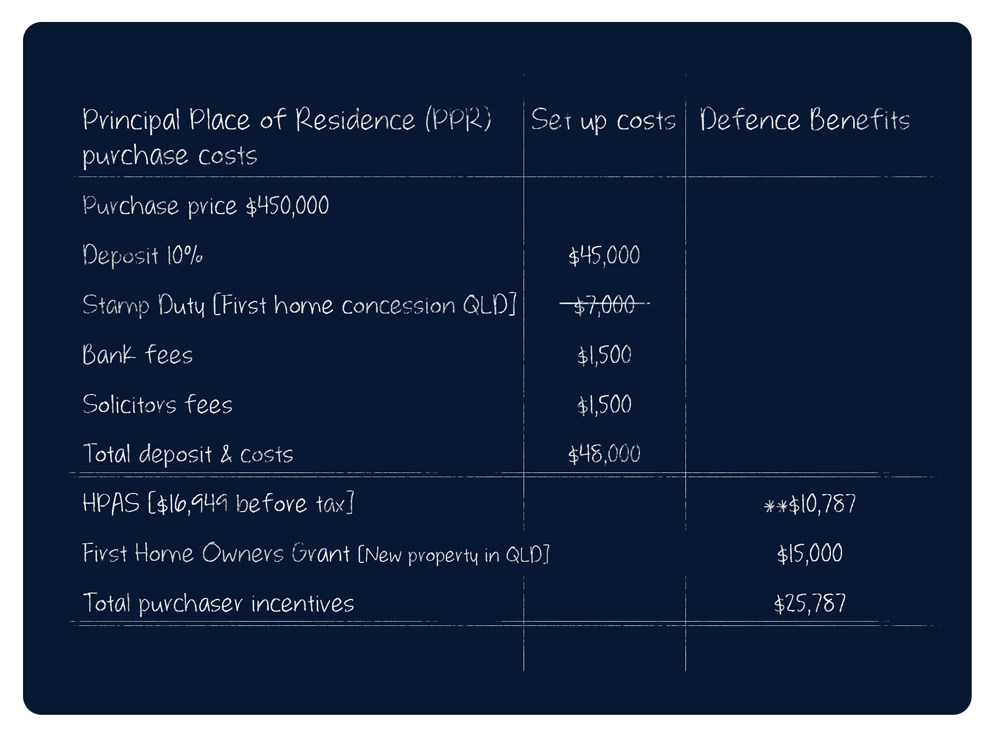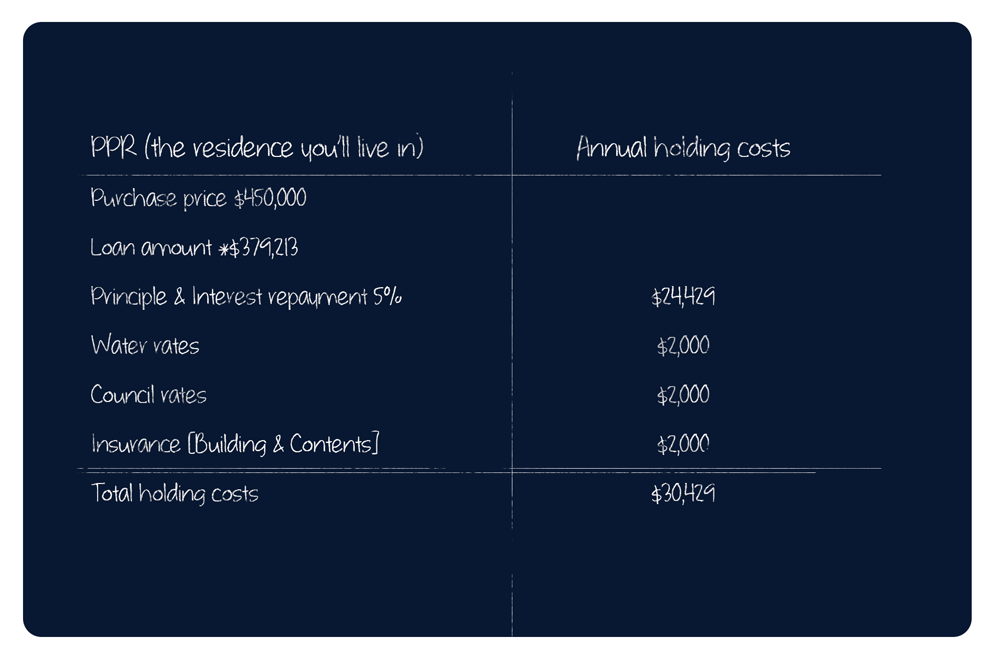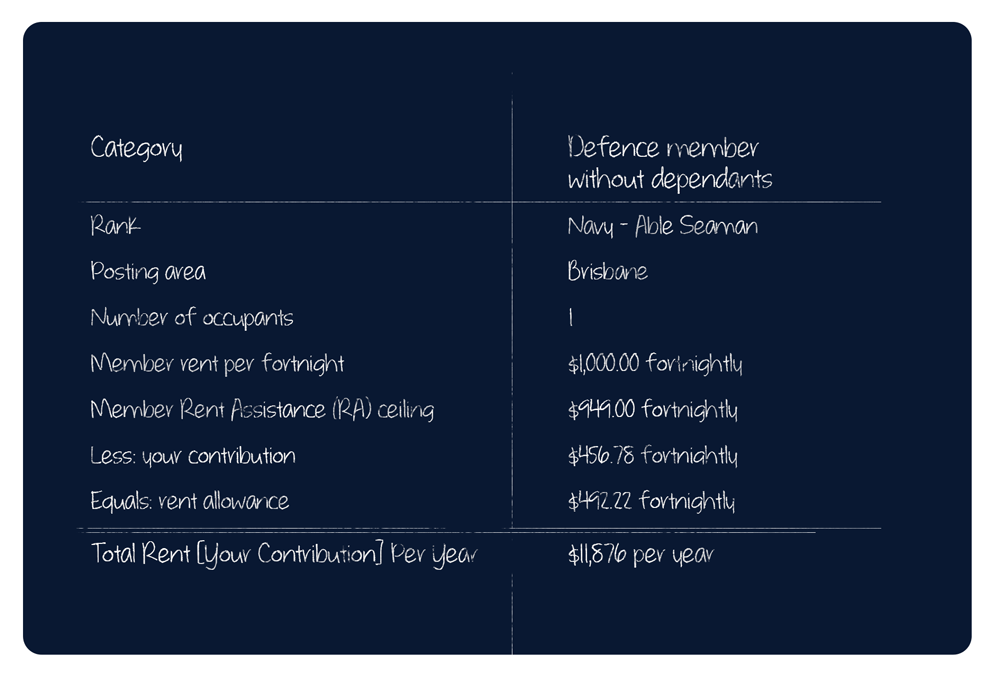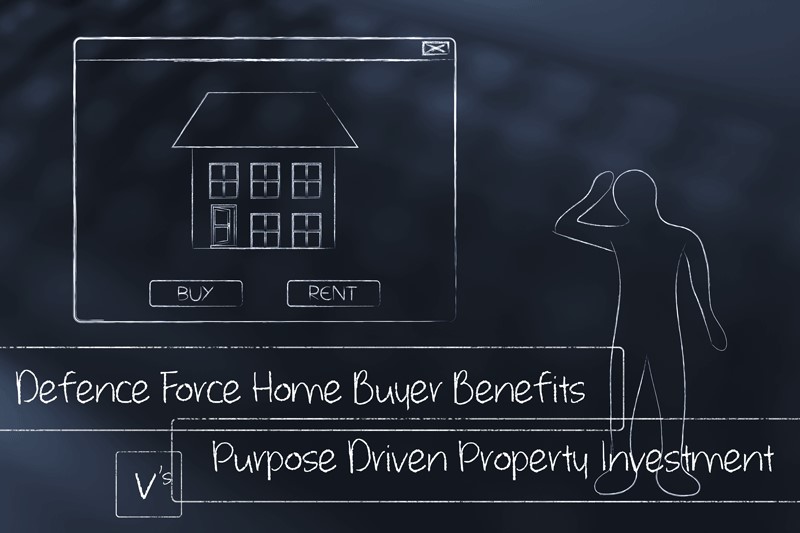Should I buy a house to live in [PPR] or invest in?
We’re often asked what the best scenario is for Australian Defence Members is – should you buy a house to live in (aka; permanent place of residence [PPR]), or choose a property to invest in – and does it really matter either way?
This is a valid question. The two scenarios of borrowing to buy a house to live in or invest in a property are miles apart. As a long-term, wealth-building strategy, we often recommend that first home buyers should consider investing in property as an option worth weighing up. Let us show you some numbers, and you can decide for yourself.
If you’re wondering whether it’s best buy a house to live in or invest in, then come along to a free Capital Properties Discovery Sessionand we’ll help you work through the best scenario for your position.
As ex-ADF members ourselves and with 20+ years in property investment, we can point you in the right direction, empowering you every step of the way.
On the go? Here’s 30 seconds of take outs:
- There are some great home buyer incentives for Australian Defence Force members. And with the ADF rent allowance incentive, investing in one area and renting in another may be a better choice to support your lifestyle goals in the future.
- At Capital Properties we won’t to tell you whether to buy a house to live in or invest in. Our aim is to help you make the decision that’s best for you and that comes down to understanding the numbers. The numbers tell the story.
- Don’t make decisions based on dangled carrots. Work out how many carrots you can pop into storage in the medium and long term before you jump at an incentive to buy property.
Keep Reading >>>
Home versus investment?
In a wealthy country like Australia, home ownership is a popular aspiration. At the same time, we know that property investment can turn a disposable income into a secure financial future.
If you’re earning a secure income for the longer term, you could buy a house to live in or start investing in property. With your future lifestyle goals set, and a healthy savings plan in place this choice can pose a real dilemma.
The two questions you need to consider are:
- How much money do you need to buy the property?
- What are the ongoing costs of holding the property over the long term?
Knowledge is power when it comes to making smart decisions. Let’s explore both of these options further.
The costs of being a first homeowner
In investment and financial speak, your Principal Place of Residence (PPR) is the property that you live in and call home. Buying a PPR means you’ll incur ‘holding costs’ – i.e. the outgoings and expenses associated with getting a mortgage and maintain the property.
Your PPR commits you to principal and interest repayments on your home loan, maintenance and renovation costs, insurances, rates and all the other day-to-day expenses associated with owning property. And funding all these outgoings? After tax. Youch.
If you buy a house to live in, the holding costs of living in the residential property you’ve borrowed money for, are much higher than if you buy a residential property as an investment.
The holding costs of investing in a residential property
A residential property that you have purchased as an investment commits you to interest only repayments on your loan, as well as the outgoing costs such as maintenance and renovation costs, insurances, rates and all the other day to day expenses associated with owning property.
The difference is that with an investment property, you’ll be receiving rental income which reduces your taxable income. And your loan repayments are more likely to be interest only which is a lower commitment from your fortnightly cash flow.
That’s just the beginning. If you’re in the Australian Defence Force, you might decide to buy a house to live in a location you’ve been posted to. However, it may not be where you would choose to live otherwise. And it may not be a wise long-term investment.
Let’s take a closer look at that scenario.
Buying a home as an ADF member
As an incentive and thanks for your commitment to the Australian Defence, the ADF offers its members housing benefits. These incentives can be attractive in the short term but is buying a PPR as your first property in your best interest for the future?
We often chat with young Defence members who get seduced into using their property defence entitlements to buy into the locality they’ve been posted. Building a serviceable home with some of the trimmings. One problem with this is the posting location might not offer much in terms of long-term market growth and if you’re reposted elsewhere, the rental returns might not be great either.
We understand the appeal of wanting to jump in and buy a house to live in when you feel cashed up. But buying a PPR means loading up with bad debt. Bad debt is any debt that you pay interest on and won’t reduce your taxable income. That’s why it’s our mission to interrupt your flow of immediate term thinking and show you a more strategic, streamlined way. A way of setting yourself up with more freedom of choice in the long run.
Our goal is to help you maximise your ability to invest and grow your personal wealth. We’re not going to tell you – we’d rather show you. So, let’s explore the numbers.
Costs of buying your first home (PPR) with incentives
Read on for a breakdown of costs associated with buying your first PPR and learn how Defence Force members can use Government grants to help. We’ll look at the First Home Owner Grant (FHOG) in Victoria and FHOG in New South Wales and examine the Defence Force Residence Exemptions.
Imagine you’ve just been given the heads up on your new posting. You could use your Home Purchase Assistance Scheme (HPAS) or your Defence Home Ownership Assistance Scheme (DHOAS) in conjunction with the First Home Owners Grant (FHOG) to purchase a property in your new digs. We talk more about these grants in the post: “Buying a house while in the Defence Force”.
The whole idea is enticing. Imagine that you buy a house to live in with stone benchtops, new appliances and maybe even a glistening new pool to entertain all your oppos! Sounds good right? But is it the right decision for the long-term?
Here are some numbers.

* Figures were correct at the time of publishing this article (January 2023)
**After tax @ $80,000 p/a income
Looks great right?! And repayments are achievable, although with the current higher interest rates you might feel a bit of a pinch.
Cons of buying a house to live in [PPR] versus invest in
Let’s switch back to reality for a moment. This isn’t your dream home in your ideal location. Sure, you’ll buy a house to live in for now, and then maybe you’ll turn it into an investment property once you’ve seen this new posting out.
As a homeowner, you’ll be paying principal and interest repayments on a mortgage. You’ll also need to pay the property’s outgoings including the water rates, the council rates, insurances, and upkeep of the property – this can be a significant hit on your fortnightly cash flow. It will change the way you live because you’ll need to tighten up.
Buying a PPR might be okay while interest rates are low but it’s a different matter when the interest rates are as high as they are right now.
Here are some of the numbers.
Calculate cash flow impacts based on the holding costs of a PPR

Purchase price – 10% deposit – Defence benefits [FHOG + HPAS] <<Need to update these costs?>>
That’s a total of over $30K to fork out each year, after tax – around $600 out of your pocket each week. You’ve just dropped your disposable income. With extra expenses to cover, your ability to borrow for a loan to start or grow your property investment portfolio diminishes. And if you buy a house to live in, there are no tax breaks.
Also, if the locality you’re being posted to isn’t a great property investment area you’ll kick yourself that you didn’t choose a better area to invest in.
An option may be to hold off buying your PPR for now, and rent. Keep your Defence entitlements and invest in a purpose-built investment property in a major capital city with good property investment criteria. There are localities where the rental income returns are attractive in the short and longer term; and the capital growth is healthy.
Rent allowance - the financial incentive that puts cash back in your pocket
Here’s a summary based on the current Defence rent allowance. Below is a worked example (along with the previous one) of how you could cut your ~$600 per week housing costs to ~$230 per week. That’s an extra $370 every week back into your cash flow.

Breaking down the costs of buying an investment property first
Consider this option. Take the extra cash freed up through using your rent allowance incentive and invest in property in a research-driven way.
Leverage your deposit and your income into an investment property in a major capital city with sustained population growth. Research to find a locality that gives you a good supply and demand mismatch for the long-term. This will increase your investment roughly between 5 to 8% per annum and gives you great tax breaks. The property will be an income producing asset which can, in turn, increase your borrowing capacity so you can continue to grow your asset base.
Why not save your Defence entitlements until you work out where it is that you really want to live for the longer term? Invest in a residential property, and simply rent now with the goal of buying your dream home.
Think of it like take-away food. It’s convenient in the moment, but it won’t deliver long-term health benefits! With a long-term view, crunching the numbers on the holding costs of an investment property is a completely different scenario from buying a PPR.
By investing in a property, you’ll receive a rental income and claim tax benefits – two sources of income!
When re-working the example of the $450,000 property we used in the PPR scenario, you’ll quickly see the ongoing holding costs are considerably lower.
Calculate cash flow impacts based on holding costs of an investment property
*Please use as an example only
** Purchase price – 12% deposit [$54,000]
So, instead of costing you an additional $600 per week – you’d put $85 back in your pocket weekly! And this worked example doesn’t cover the capital growth that’s happening from year to year, that you can then leverage to borrow for your next investment property.
Buying a property for investment first will enable you to continue your savings plan and leverage into your next property in a couple of years.
And, if the interest rates go up so do your tax breaks, and you can put your rents up too.
Show don’t tell. We’ll let you decide which is the better option!
If you’d like help exploring how the numbers stack up for your personal situation, we’d be happy to help. Give us a call, or click on the Capital Properties links below to find out more: Schedule a Free Discovery Session | Property Investor Workshops
While you’re here, check out our industry-leading property investor tools and apps.






